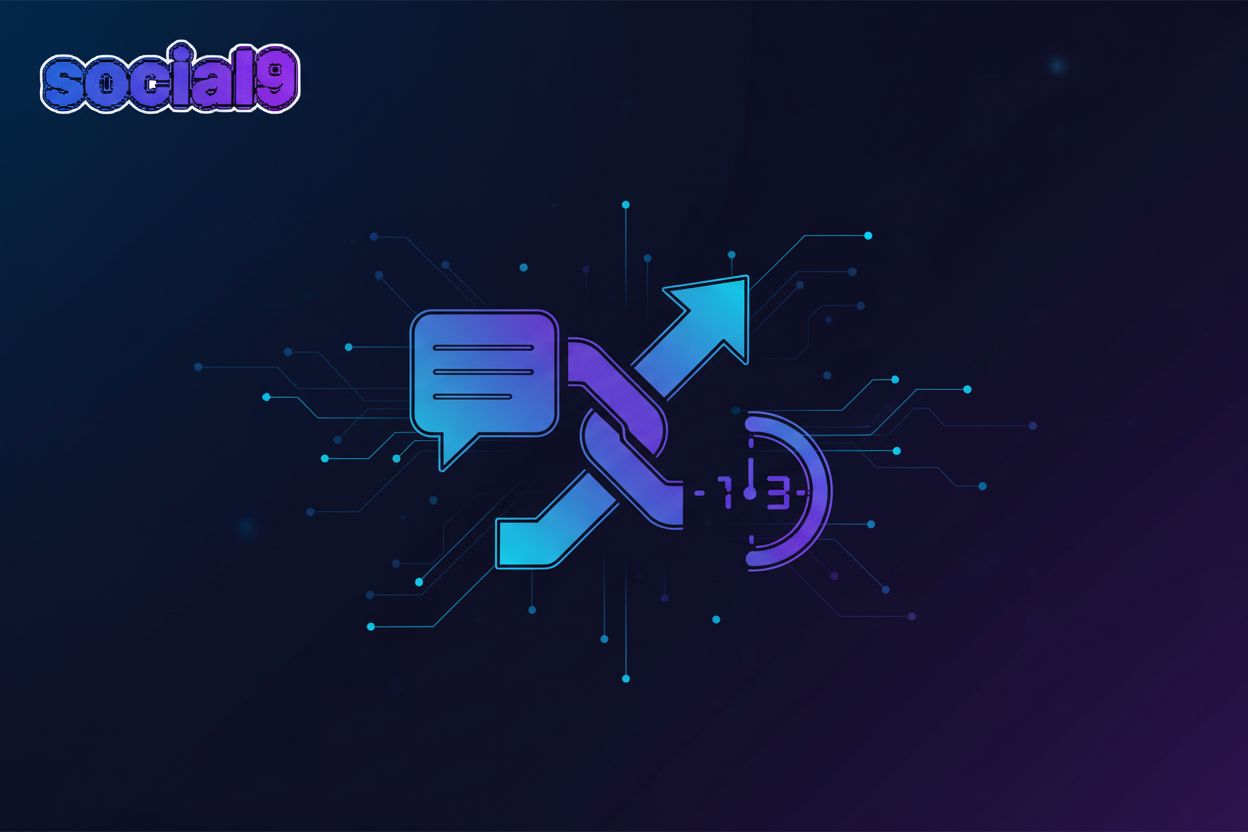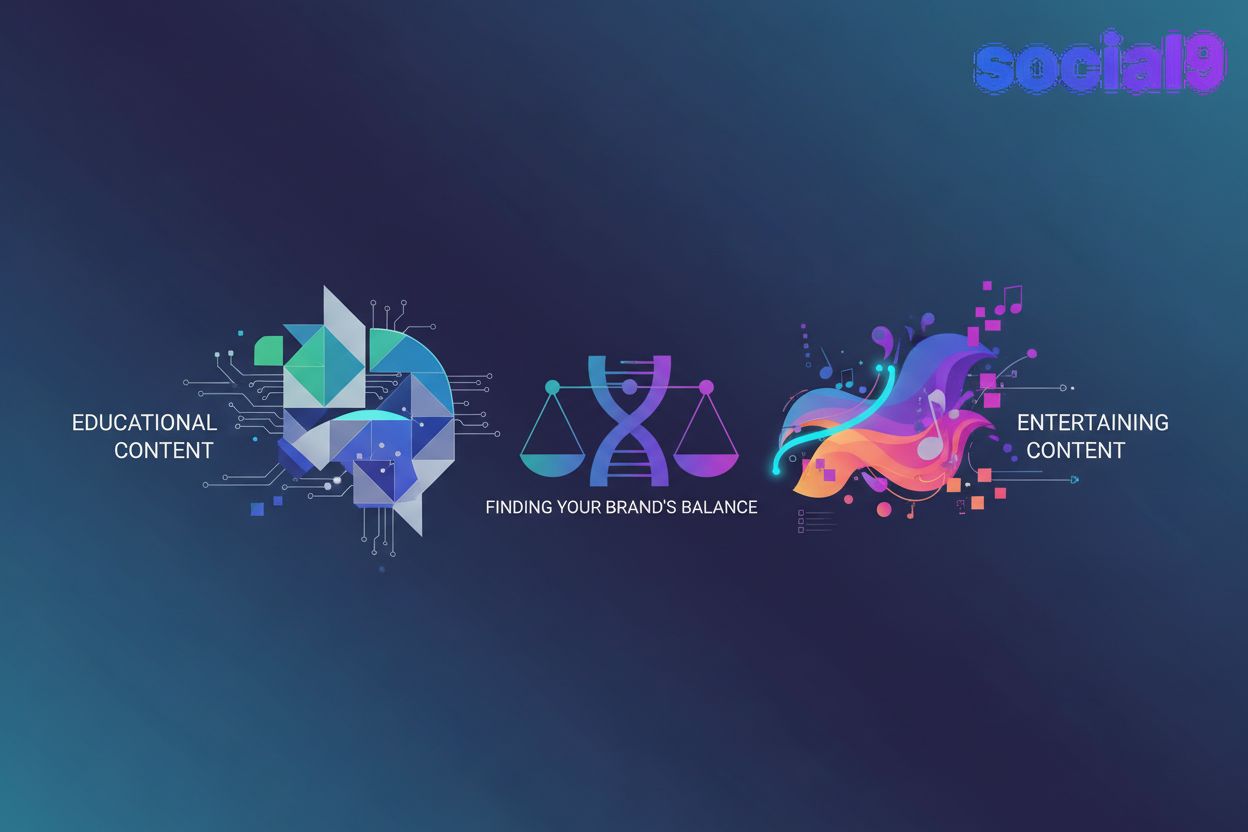Unlocking Brand Voice: How NLP Powers Authentic Content Creation
Understanding Brand Voice and Its Importance
Is your brand just another face in the crowd? A strong brand voice can make all the difference.
Brand voice is the unique personality a brand embodies in its communications. It's more than just the words you use; it's the tone, style, and values you project. Think of it as the consistent way your brand speaks and interacts with the world.
Brand voice is the distinct personality a brand takes on in its communications. It's what makes your brand instantly recognizable. It's the consistent expression of your brand's values and mission.
- It's what makes your brand instantly recognizable. It's the consistent expression of your brand's values and mission.
It encompasses tone, language, and values, reflecting the brand's identity.
- For example, a healthcare company might adopt a compassionate and reassuring voice, while a tech startup might use an innovative and enthusiastic tone. NLP can help identify these specific tones by analyzing word choice, sentence structure, and emotional language patterns.
A consistent brand voice builds trust and recognition with the audience.
- When your audience knows what to expect from your brand, they're more likely to engage and build a lasting relationship. This consistency fosters loyalty and positive word-of-mouth, which are invaluable for long-term success.
Brand voice differentiates you from competitors in a crowded social landscape.
- In a sea of content, a unique and authentic voice helps you stand out. It allows you to connect with your audience on a deeper level, making your brand memorable.
It fosters emotional connections with your target audience.
- A well-defined voice can evoke feelings of trust, excitement, or empathy. For instance, a retail brand may use a friendly and helpful voice to build rapport with customers.
Consistent voice reinforces brand values and messaging across platforms.
- Whether it's on Instagram, X (formerly Twitter), or LinkedIn, a unified voice ensures your brand message remains clear and impactful. Each post should resonate with your core values and build a cohesive brand narrative.
Inconsistency leads to brand confusion and erodes trust.
- A brand that sounds different from one day to the next can appear unreliable and unprofessional. Customers may question the authenticity of your brand and its values.
It can dilute marketing efforts and reduce engagement.
- Without a consistent voice, your marketing campaigns may lack focus. This can lead to lower engagement rates and a less effective overall strategy.
A mismatched voice can alienate your target audience.
- If your brand's voice doesn't resonate with your target demographic, you risk losing their interest. For instance, using overly technical jargon when speaking to a general audience can create a disconnect.
Understanding your brand voice is the first step to creating content that truly resonates. Next, we'll explore how NLP can help you define and maintain that voice.
Introduction to NLP: The Key to Automated Brand Voice Analysis
Did you know that computers can now "read" human emotions? That's the power of Natural Language Processing (NLP), and it's changing how brands connect with their audience.
NLP is a game-changing branch of Artificial Intelligence (AI). It's designed to enable computers to understand, interpret, and generate human language. Think of it as teaching machines to "speak" our language.
It uses a range of computational techniques. Sentiment analysis, for example, helps determine the emotional tone behind text, while topic modeling identifies recurring themes. Text classification organizes text data into relevant categories.
- For instance, text classification can categorize customer feedback into "positive feedback on tone," "negative feedback on formality," or "neutral comments about content."
NLP goes beyond simple word recognition. It empowers machines to extract meaning and context from text data, understanding nuances like sarcasm or irony. This allows for more accurate and relevant analysis.
NLP algorithms can dissect your content to identify stylistic fingerprints. This includes elements like tone (formal, casual, humorous), sentiment (positive, negative, neutral), and vocabulary (word choice, jargon).
It can rigorously assess consistency across all your content. By analyzing blog posts, social media updates, and marketing materials, NLP ensures your brand voice remains unified.
NLP transforms subjective perceptions into objective, data-driven insights. This provides a clear understanding of how your brand voice is perceived by your target audience.
Scale is a major advantage. NLP can analyze vast amounts of content quickly and efficiently, something impossible for manual review.
NLP eliminates human bias, providing an objective view of your brand voice. This ensures consistent and unbiased evaluation across all content.
NLP delivers concrete data for improving brand messaging. This includes identifying areas of inconsistency, refining tone, and optimizing vocabulary for better engagement.
By automating brand voice analysis, NLP offers a path to more authentic and impactful content creation. Next up, we'll explore practical applications of NLP in maintaining brand voice consistency.
Practical Applications of NLP in Brand Voice Optimization
Imagine being able to instantly analyze all your brand's content, from social media posts to website copy, and identify exactly where your voice shines or falls flat. NLP makes this a reality, offering practical ways to ensure your brand always speaks with a consistent and authentic tone.
NLP can analyze your existing content across various platforms to pinpoint inconsistencies in your brand voice. This includes evaluating social media posts, blog articles, and website copy. By identifying deviations from established guidelines, you can ensure that your messaging remains aligned with your brand's core values.
NLP helps pinpoint specific areas where your voice falters. For instance, it can detect if your tone becomes too formal on platforms where a casual approach is more effective. It could also highlight the overuse of jargon in content aimed at a general audience.
Tools like Social9's AI-Powered Generation can help maintain a consistent brand voice across all content creation efforts. Social9's platform offers AI-driven tools for generating social media content, suggesting captions, and optimizing hashtags, all designed to align with your brand's voice.
NLP allows you to understand your competitors' brand voice and messaging. By analyzing their content, you can identify the stylistic choices they make, the values they emphasize, and the tone they adopt. This provides valuable context for understanding their market positioning and audience engagement strategies.
It helps identify their strengths and weaknesses in terms of voice and tone. For example, you might discover that a competitor excels at using humor to connect with their audience, but struggles with maintaining a consistent tone across different platforms.
Gaining these insights empowers you to differentiate your brand and improve your own voice strategy. By understanding what works and what doesn't for your competitors, you can refine your approach to create a unique and compelling brand identity.
NLP can monitor social media and online reviews to gauge audience sentiment towards your brand. Sentiment analysis tools can automatically classify mentions of your brand as positive, negative, or neutral, providing a real-time view of public perception.
This helps you understand how your brand voice is perceived and whether it resonates with your target audience. For example, if you notice a spike in negative sentiment after launching a new marketing campaign, NLP can help you analyze the comments and reviews to understand why.
By understanding audience sentiment, you can adjust your messaging to address negative feedback and reinforce positive sentiment. This might involve refining your tone, clarifying your messaging, or even adjusting your brand values to better align with audience expectations.
By leveraging NLP, you can transform your brand voice from a guessing game into a data-driven strategy. Next, we'll delve into how NLP can personalize content to resonate with specific audience segments.
Tools and Techniques for NLP-Powered Brand Voice Analysis
Ready to give your brand voice a super boost? Let's dive into the tools and techniques that make NLP-powered brand voice analysis a game-changer!
NLP isn't some far-off concept; it's right at your fingertips. Several libraries and platforms make analyzing brand voice easier than ever.
- NLTK (Natural Language Toolkit): A go-to for text analysis, NLTK allows you to dissect sentences and understand their components. For example, you could use NLTK to identify the frequency of specific keywords in your content, ensuring alignment with your brand's core messaging.
- spaCy: Known for its speed and efficiency, spaCy excels at tasks like identifying named entities and understanding sentence structure. A retail brand could use spaCy to quickly analyze customer reviews, identifying common themes and sentiments related to their products.
- Transformers: These models, often pre-trained, are excellent for nuanced language understanding. A healthcare organization might use a Transformer model to analyze patient feedback, detecting subtle emotional cues that indicate satisfaction or concern.
- Google Cloud NLP and AWS Comprehend: These cloud-based platforms offer comprehensive NLP services, including sentiment analysis and topic modeling. A financial institution could use Google Cloud NLP to monitor social media conversations, gauging public sentiment towards their brand and identifying potential reputational risks.
Here's a simplified example in Python showing sentiment analysis using the transformers library:
from transformers import pipeline
sentiment_analysis = pipeline("sentiment-analysis")
result = sentiment_analysis("This product is amazing!")
print(result)
This Python code snippet demonstrates a basic sentiment analysis pipeline. The pipeline("sentiment-analysis") function loads a pre-trained model capable of determining the emotional tone of text. When applied to the input "This product is amazing!", it outputs a classification indicating the sentiment (e.g., POSITIVE) and a confidence score. In a brand voice analysis context, this output helps assess if the language used aligns with the desired positive and enthusiastic tone.
Generic NLP models are a great starting point, but to truly capture your brand's unique voice, custom training is key.
- Creating a Labeled Dataset: Gather examples of content that perfectly embody your brand voice. This dataset will serve as the foundation for your custom model.
- Fine-Tuning Pre-Trained Models: Leverage pre-trained models and fine-tune them with your labeled data. This allows the model to recognize the nuances of your brand's tone, style, and vocabulary.
- Iterative Improvement: Continuously evaluate and refine your model as your brand voice evolves. Regularly adding new data and retraining the model ensures it remains accurate and relevant.
How do you know if your brand voice is truly consistent? NLP provides metrics to track and measure your progress.
- Sentiment Score Variance: Track the consistency of sentiment scores across different content pieces. High variance may indicate inconsistencies in tone or messaging. For example, a variance above 0.5 might suggest that some content is overly negative while other pieces are overly positive, deviating from a balanced brand tone.
- Topic Distribution Similarity: Compare the distribution of topics across various platforms. Significant differences could suggest that your brand voice is not unified. If your blog focuses heavily on product features but your social media is all about lifestyle, this metric would highlight that disconnect.
- Vocabulary Analysis: Monitor the use of specific keywords and phrases to ensure they align with your brand's core values and messaging.
This diagram illustrates how different NLP techniques can be combined to analyze various aspects of brand voice, from sentiment to topic relevance. It shows the flow of data through different analytical modules, ultimately providing a comprehensive overview of brand voice consistency and effectiveness.
With these tools and techniques, you're well-equipped to harness the power of NLP for authentic content creation. Next, we'll explore how NLP can help personalize content to resonate with specific audience segments.
Integrating NLP into Your Content Creation Workflow
Imagine generating blog posts, social media updates, and website copy that perfectly capture your brand's unique voice, all with the help of ai. That's the promise of integrating NLP into your content creation workflow.
NLP can be used to automatically generate content that aligns seamlessly with your brand voice. This means training NLP models on existing content that exemplifies your brand's tone, style, and vocabulary. By doing so, the ai learns to emulate your brand's unique linguistic fingerprint.
ai-powered tools can create a wide range of content, from engaging social media posts to informative blog articles and persuasive website copy. For example, a financial institution can use NLP to generate articles explaining complex investment strategies in a clear and accessible way, maintaining a tone of expertise and trustworthiness. This is achieved by training the NLP model on existing expert financial content and using sentiment analysis to check for authoritative language and appropriate terminology.
This automation ensures consistency and efficiency in your content creation process. Rather than relying solely on human writers who may have varying styles, NLP provides a reliable way to maintain a unified brand voice across all channels.
NLP-powered tools can offer real-time feedback on the tone and style of content as it's being created. Imagine a writing assistant that flags sentences that don't align with your brand's established guidelines. This ensures that every piece of content stays true to your brand's identity.
This feedback can guide content creators to make adjustments that align with brand voice guidelines. For example, if a writer uses overly technical jargon, the NLP tool can suggest simpler alternatives, ensuring the content remains accessible to the target audience.
Ultimately, this real-time guidance improves content quality and consistency. By providing immediate feedback, NLP helps content creators learn and internalize the nuances of your brand voice, leading to more authentic and impactful communication.
NLP can adapt your brand voice to suit the unique characteristics of different social media platforms. What works on LinkedIn might not resonate on TikTok, and NLP can help you tailor your messaging accordingly.
This involves tailoring content to resonate with specific audience demographics on each platform. For example, a retail brand might use a more playful and visual voice on Instagram, while adopting a more professional and informative tone on LinkedIn.
By adapting your brand voice, you can maximize engagement and reach on each platform. NLP can analyze audience sentiment and engagement metrics to identify the most effective messaging strategies for each channel, ensuring your content always hits the right note.
This diagram shows a workflow for integrating NLP into content creation. It visualizes how NLP tools can assist at various stages, from initial content generation and editing to platform-specific adaptation, ensuring brand voice consistency throughout the process.
Integrating NLP into your content creation workflow offers a powerful way to maintain brand voice consistency and create engaging content across all channels. Next, we'll explore how to overcome challenges in NLP-based brand voice analysis.
Overcoming Challenges in NLP-Based Brand Voice Analysis
Is your NLP-powered brand voice analysis hitting a wall with sarcasm, multiple languages, or ethical concerns? These challenges are real, but with the right strategies, you can overcome them and unlock the full potential of NLP.
Detecting sarcasm and irony is notoriously difficult for NLP. These rely heavily on context and understanding human intentions, which machines struggle with.
To improve accuracy, consider using techniques like contextual analysis, which examines the surrounding words and sentences. Also, sentiment analysis can be tweaked to identify mismatches between expressed sentiment and the overall tone.
Combining NLP with other ai techniques, such as computer vision (to analyze facial expressions in videos) or audio analysis (to detect tone of voice) can provide a more comprehensive understanding.
Analyzing brand voice in multiple languages presents unique challenges due to linguistic and cultural differences. What resonates in one language might not translate well to another.
Using multilingual NLP models specifically trained on different languages can greatly improve accuracy. These models are designed to understand the nuances of each language.
It's crucial to ensure consistency in brand voice across different cultural contexts. This means not only translating the words but also adapting the tone and style to resonate with local audiences. For instance, a direct, assertive tone might be acceptable in some Western cultures but perceived as rude in many Asian cultures, requiring a softer, more indirect approach.
When using NLP to analyze brand voice, it's essential to ensure data privacy. Anonymize data whenever possible and be transparent with users about how their data is being used.
Ethical considerations arise when using NLP for content generation and manipulation. Avoid creating misleading or deceptive content that could harm your brand's reputation.
Transparency and responsible use of ai are key. Clearly disclose when ai is being used to generate content, and always prioritize accuracy and authenticity.
This diagram visually represents common challenges in NLP-based brand voice analysis, such as understanding sarcasm, handling multilingual data, and navigating ethical considerations. It might also suggest potential solutions or best practices for each challenge.
Addressing these challenges will lead to more effective and ethical NLP-based brand voice analysis. Now, let's look towards the future of brand voice and how NLP and ai are driving personalization.
The Future of Brand Voice: NLP and AI-Driven Personalization
Imagine a future where your brand anticipates customer needs before they even voice them. That's the potential of NLP and ai in shaping the future of brand voice.
NLP can analyze vast datasets to predict how a brand's voice will resonate with future audiences. This involves tracking trends, sentiment shifts, and emerging topics to anticipate changes in consumer preferences.
ai algorithms can adjust messaging in real-time to align with evolving sentiment. For example, a retail brand could use predictive analysis to determine the optimal tone for promoting seasonal products, adapting its voice based on current consumer moods. To infer these moods, NLP would analyze social media chatter, news sentiment, and even search trends related to specific products or events.
Staying ahead of the curve with ai-powered insights allows brands to proactively refine their communication strategies. This ensures that their voice remains relevant and engaging in a dynamic market.
NLP enables tailoring brand voice to individual customer preferences. By analyzing past interactions, purchase history, and demographic data, brands can create personalized experiences that foster stronger relationships.
Hyper-personalization allows brands to communicate with each customer in a way that feels authentic and relevant. A healthcare provider, for instance, could use NLP to adjust the tone of its communications based on a patient's emotional state and health literacy level.
This level of personalization enhances customer loyalty and drives engagement by making each interaction feel meaningful and valued.
ai tools will augment the capabilities of content creators, freeing them from mundane tasks and allowing them to focus on strategic thinking.
Human creativity and strategic thinking remain essential. Content creators will need to guide ai, ensuring that the generated content aligns with brand values and resonates with the target audience.
Embracing ai as a partner in the content creation process allows brands to scale their efforts while maintaining authenticity and relevance.
The integration of NLP and ai promises a future where brand voice is not only consistent but also predictive and personalized. As technology evolves, content creators will play a vital role in guiding ai to ensure authentic and impactful brand communication.





